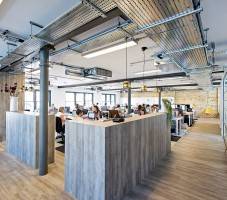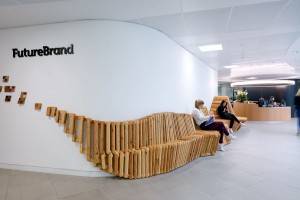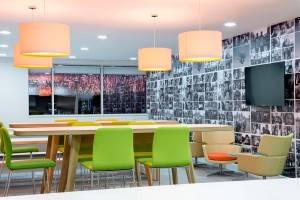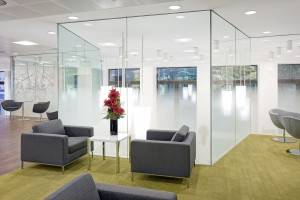 The case for sustainable building design used to be based on two straightforward principles. The first was that buildings had to offer up some sustainable features to comply with the ethical standards of their occupiers. The second was that there was some financial benefit. Often these principles went hand in hand, especially when it came to issues such as energy efficiency. They remain the foundations of the idea of green building design and are applicable across a range of building accreditations such as BREEAM as well as standards relating to specific products and policies. Over the past couple of years, however, we have become increasingly aware of other drivers that might make us all re-evaluate how we approach sustainability. These drivers are based on a more sophisticated understanding of green building design and the benefits for all of those involved.
The case for sustainable building design used to be based on two straightforward principles. The first was that buildings had to offer up some sustainable features to comply with the ethical standards of their occupiers. The second was that there was some financial benefit. Often these principles went hand in hand, especially when it came to issues such as energy efficiency. They remain the foundations of the idea of green building design and are applicable across a range of building accreditations such as BREEAM as well as standards relating to specific products and policies. Over the past couple of years, however, we have become increasingly aware of other drivers that might make us all re-evaluate how we approach sustainability. These drivers are based on a more sophisticated understanding of green building design and the benefits for all of those involved.
- The more sophisticated buyer
 The days are limited when suppliers could get away with offering their clients greenwash and unsubstantiated or doubtful claims about their products and businesses. Nor too is it enough for them to merely comply with whatever standards they deem are needed to pass certain parts of the tendering process.
The days are limited when suppliers could get away with offering their clients greenwash and unsubstantiated or doubtful claims about their products and businesses. Nor too is it enough for them to merely comply with whatever standards they deem are needed to pass certain parts of the tendering process.
Buyers are now far more experienced and aware of the complexities of environmental claims and so are more likely to look for information about supply chains, cradle to cradle management systems, service packages and so on. They know very well that a chair may be 98 percent recyclable, but that it is a meaningless feature without the systems needed to manage its lifecycle. Similarly they are aware of the need for holistic strategies that take account of the complex ecology of the modern office.
We are fortunate to work in a sector in which many suppliers are ahead of this particular curve, willing to go beyond what is expected of them by standards and common practice to offer products and services that exceed their client’s expectations and open up new frontiers of sustainable design.
- Wider business benefits
 While the two core arguments for sustainable building remain as valid as ever, we are also developing a greater awareness of the wider benefits to the organisation. While much is also made of the way ethical business models are attractive to potential and current employees, most important in this regard is arguably the growing evidence of the link between sustainability and individual wellbeing and productivity.
While the two core arguments for sustainable building remain as valid as ever, we are also developing a greater awareness of the wider benefits to the organisation. While much is also made of the way ethical business models are attractive to potential and current employees, most important in this regard is arguably the growing evidence of the link between sustainability and individual wellbeing and productivity.
The most significant report in this area was published last year by the World Green Building Council (WorldGBC). Its study Health, Wellbeing and Productivity in Offices: The Next Chapter for Green Building offers “overwhelming evidence” for the ways in which office design significantly impacts the health, happiness, wellbeing and productivity of people. It argues that, with salaries and benefits typically responsible for 90 percent of an organisation’s expenditure, any higher construction or occupation costs are far outweighed by even small improvements in staff performance.
The key findings of the report include:
- Indoor air quality: A comprehensive body of research suggests that better indoor air quality (low concentrations of CO2 and pollutants and high ventilation rates) can lead to productivity improvements of 8-11percent.
- Thermal comfort: Research demonstrates that thermal comfort has a significant impact on workplace satisfaction and modest degrees of personal control over thermal comfort can return single digit improvements in productivity.
- Lighting and views of nature: Several studies have estimated productivity gains as a result of proximity to windows, with experts now thinking that views from windows are probably the more significant factor, particularly where the view offers a connection to nature.
- Noise and acoustics: Research suggests that being productive in the modern knowledge-based office is practically impossible when noise provides an unwanted distraction. This can be a major cause of dissatisfaction amongst occupants.
- Interior layout: The way the interior of an office is configured (including workstation density and configuration of work space, breakout space and social space) has been found to have an impact on concentration, collaboration, confidentiality and creativity.
- Active design and exercise: Health can be improved through exercise, and so active design within a building, and access to services and amenities such as gyms, bicycle storage and green space can help to encourage healthier lifestyles of building occupants.
There is a growing movement to accredit such broad approaches. The Green Building Certification Institute (GBCI) and the International WELL Building Institute (IWBI) have launched a WELL Building Standard which sets out to improve the health and wellbeing of people and claims to complement green building rating programs such as LEED and BREEAM. The standard claims to be a performance and research based system for measuring, certifying and monitoring features that may impact human health and wellbeing, through air, water, nutrition, light, physical health, comfort and mental and psychological wellbeing.
- The value of sustainable buildings for developers and occupiers
 Earlier this year, a report from CBRE found that property owners make a greater return on their investments when they improve the sustainable credentials of buildings. According to the report, more and more investors are taking into account environmental considerations which they consider have a direct influence on the returns and value of their assets. According to the report, nearly three-quarters believe sustainability is either a critical or desirable criterion when making investment decisions because occupiers are willing to pay more for buildings with significant sustainable features.
Earlier this year, a report from CBRE found that property owners make a greater return on their investments when they improve the sustainable credentials of buildings. According to the report, more and more investors are taking into account environmental considerations which they consider have a direct influence on the returns and value of their assets. According to the report, nearly three-quarters believe sustainability is either a critical or desirable criterion when making investment decisions because occupiers are willing to pay more for buildings with significant sustainable features.
It followed hard on the heels of a similar report from GVA, which questioned commercial property investors on their understanding of market perceptions of the value of sustainability and found that the market ‘no longer views sustainability as a nice to have’ with more than half of those questioned considering green building credentials as a key driver of investment performance. The research also found that nearly all (94 percent) of those surveyed now had a sustainability policy in place.
___________________________
 Dan Callegari is London Design Director at Area Sq
Dan Callegari is London Design Director at Area Sq














July 1, 2015
Three ways in which the business case for green building design is moving on
by Dan Callegari • Architecture, Comment, Environment, Facilities management, Workplace design
Buyers are now far more experienced and aware of the complexities of environmental claims and so are more likely to look for information about supply chains, cradle to cradle management systems, service packages and so on. They know very well that a chair may be 98 percent recyclable, but that it is a meaningless feature without the systems needed to manage its lifecycle. Similarly they are aware of the need for holistic strategies that take account of the complex ecology of the modern office.
We are fortunate to work in a sector in which many suppliers are ahead of this particular curve, willing to go beyond what is expected of them by standards and common practice to offer products and services that exceed their client’s expectations and open up new frontiers of sustainable design.
The most significant report in this area was published last year by the World Green Building Council (WorldGBC). Its study Health, Wellbeing and Productivity in Offices: The Next Chapter for Green Building offers “overwhelming evidence” for the ways in which office design significantly impacts the health, happiness, wellbeing and productivity of people. It argues that, with salaries and benefits typically responsible for 90 percent of an organisation’s expenditure, any higher construction or occupation costs are far outweighed by even small improvements in staff performance.
The key findings of the report include:
There is a growing movement to accredit such broad approaches. The Green Building Certification Institute (GBCI) and the International WELL Building Institute (IWBI) have launched a WELL Building Standard which sets out to improve the health and wellbeing of people and claims to complement green building rating programs such as LEED and BREEAM. The standard claims to be a performance and research based system for measuring, certifying and monitoring features that may impact human health and wellbeing, through air, water, nutrition, light, physical health, comfort and mental and psychological wellbeing.
It followed hard on the heels of a similar report from GVA, which questioned commercial property investors on their understanding of market perceptions of the value of sustainability and found that the market ‘no longer views sustainability as a nice to have’ with more than half of those questioned considering green building credentials as a key driver of investment performance. The research also found that nearly all (94 percent) of those surveyed now had a sustainability policy in place.
___________________________